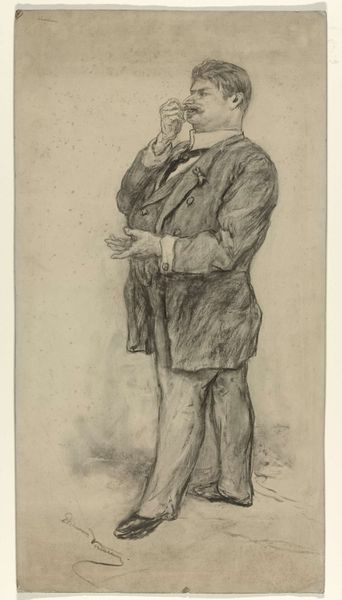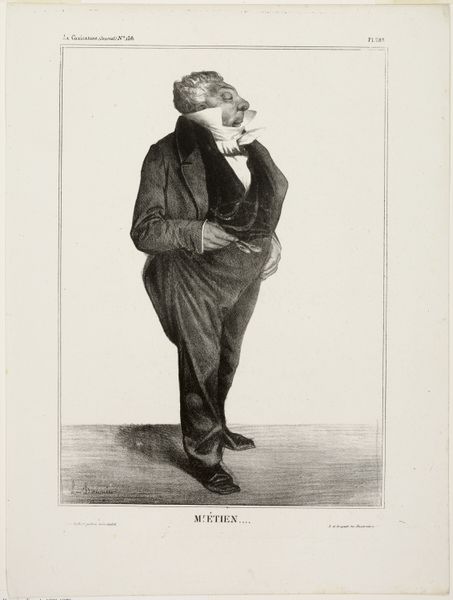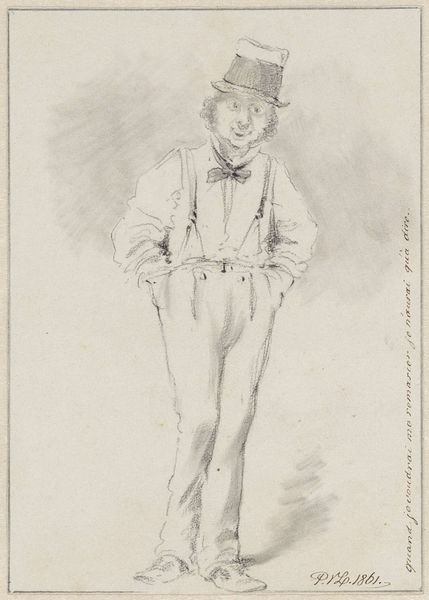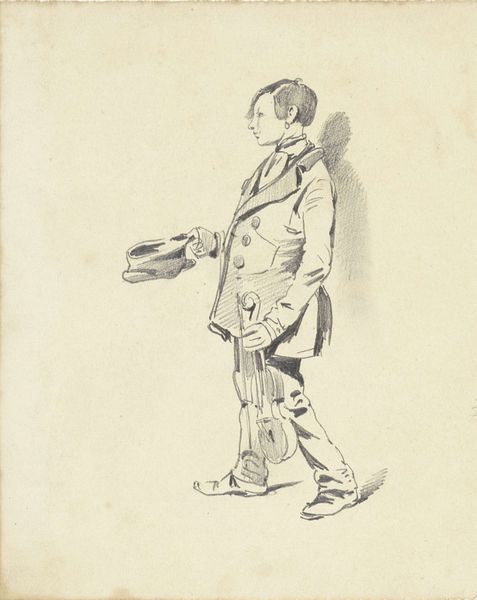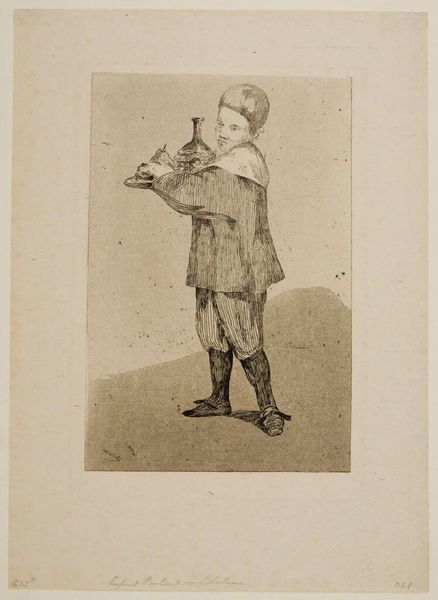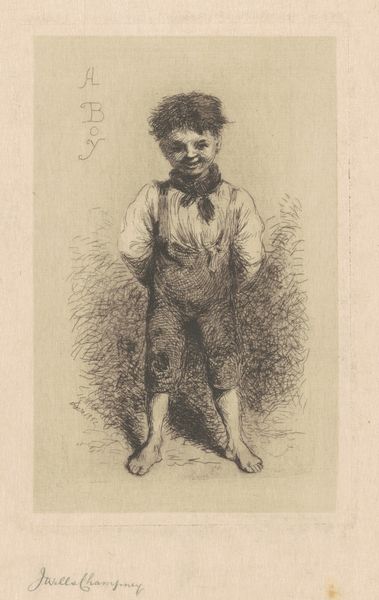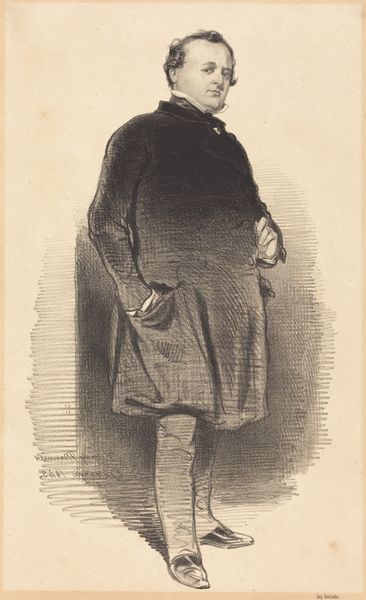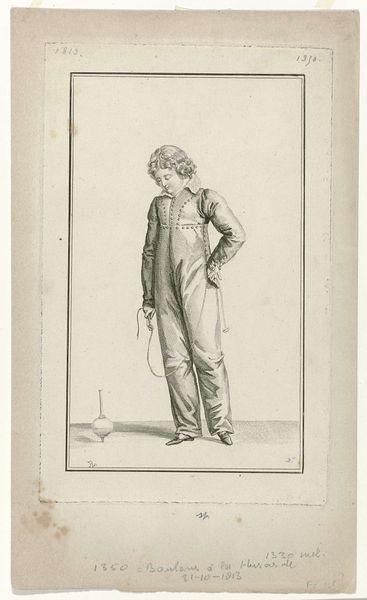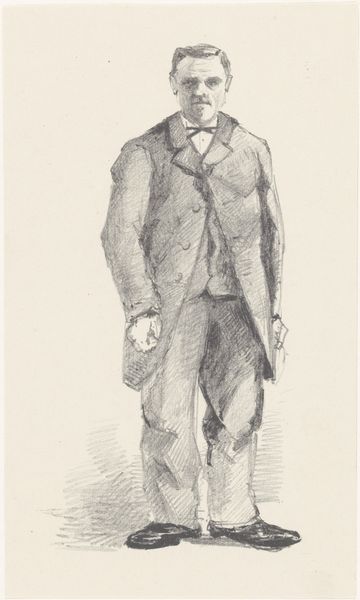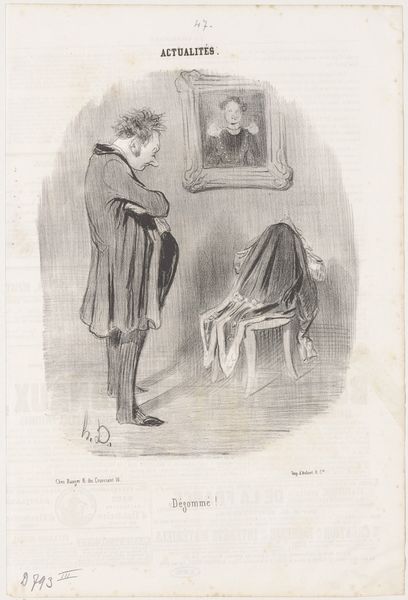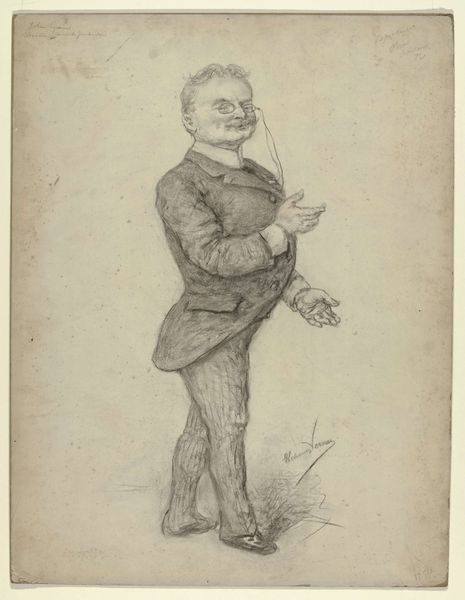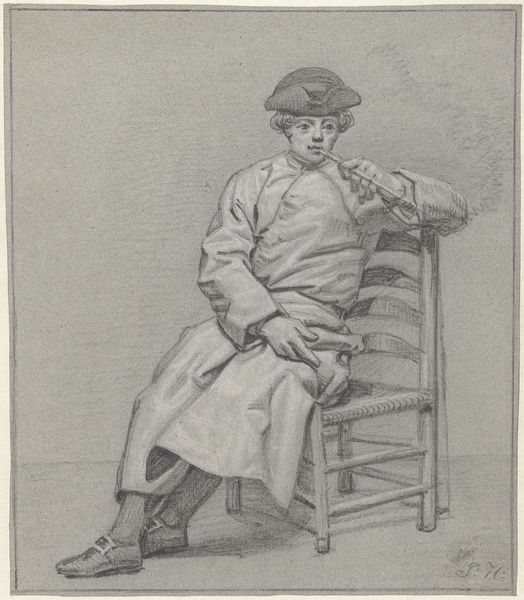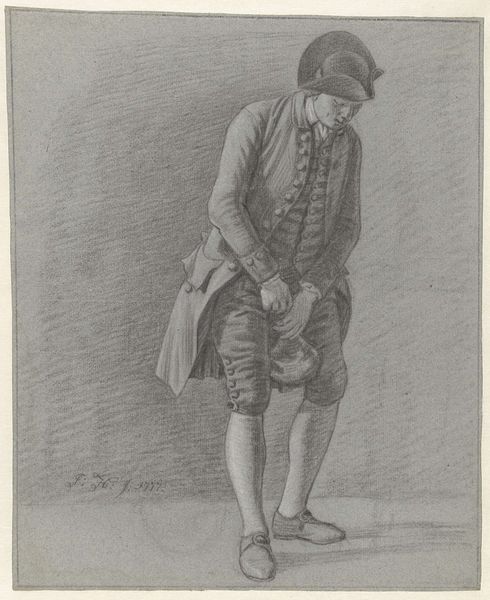
Karikatuurportret van hoogstwaarschijnlijk een kunstschilder, lid van Pulchri Studio te Den Haag 1836 - 1899
0:00
0:00
elchanonverveer
Rijksmuseum
Dimensions: height 568 mm, width 424 mm
Copyright: Rijks Museum: Open Domain
Curator: This drawing grabs my attention immediately; there's something about its subtle yet sharp characterization. Editor: Indeed. Before us we have what’s titled "Karikatuurportret van hoogstwaarschijnlijk een kunstschilder, lid van Pulchri Studio te Den Haag," or "Caricature portrait of most likely a painter, member of Pulchri Studio in The Hague". It’s believed to have been created between 1836 and 1899 by Elchanon Verveer. Curator: I'm particularly struck by the presentation of this artist—the clear class performance displayed through dress, that peculiar hair, and that defiant side glance. The subtle pencil strokes used to define and amplify these traits read as very telling regarding prevailing social attitudes and artistic identities in the Netherlands. Editor: Verveer was capturing a moment when artistic communities like Pulchri Studio were central to defining and negotiating the artist's role in Dutch society. Consider how the figure's exaggerated features – that prominent nose, the set of the jaw, the flamboyant hair under the hat – all contribute to a sense of distinctiveness. Is this emphasizing the individuality of the artist, or is it a playful jab at the artistic ego? Curator: It’s compelling how caricature offers a potent form of social commentary, exaggerating particular physical traits in order to underscore larger societal critiques of masculinity and social persona. The slightly confrontational stance also encourages reflection on how marginalized identities can perform hyper-masculinity. Editor: Right. The social commentary resonates still, especially when we consider today’s constructions of the “artistic genius”. In its historical context, this image reveals some key anxieties in representing professional identity at the time, and offers insight into the social dynamics within artistic circles. Curator: The piece highlights the enduring power dynamics embedded within seemingly lighthearted or humorous representations. This portrait continues to invite a broader discussion about image, identity, and power. Editor: Ultimately, Verveer's caricature provides a fascinating window into the social and cultural world of 19th-century Dutch art, prompting us to reconsider the narratives we construct around artists and their work.
Comments
No comments
Be the first to comment and join the conversation on the ultimate creative platform.
